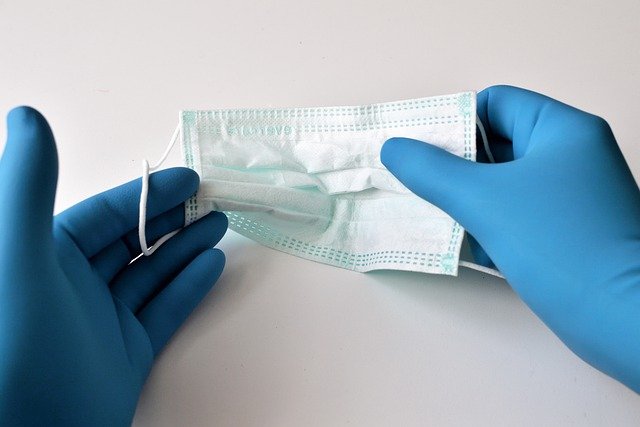Unusual Surge of Respiratory Syncytial Virus in Children
Unusual Surge of Respiratory Syncytial Virus in Children
September 24, 2021
Pediatricians have reported early emergence of respiratory syncytial virus (RSV) in the beginning of summer and consequently, a surge of RSV in children. This has been a global trend amid the ongoing pandemic. RSV is the leading viral agent of severe acute respiratory infections in infants and young children worldwide (1). Specifically, RSV is the most common cause of bronchiolitis and pneumonia in children younger than 1 year of age. Every year, RSV is responsible for an estimated 118,200 deaths worldwide among children <5 years of age, with 99% of these deaths occurring in developing countries.
 Breaking the Typical Cycle
Breaking the Typical Cycle
In general, respiratory viruses usually circulate in the fall and winter months, peaking in February. However, the ongoing pandemic with SARS-CoV-2 greatly affected patterns of other respiratory virus infections last winter season (2). For example, influenza virus activity was unusually low throughout the 2020-2021 flu season both in the US and globally, despite high levels of testing (CDC). During September 28, 2020–May 22, 2021 in the US, 1,675 (0.2%) of 818,939 respiratory specimens tested by U.S. clinical laboratories were positive for an influenza virus. Similarly, RSV was heavily suppressed during its regular season. The decline of these respiratory virus-related illnesses, hospitalizations, and deaths had resulted from COVID-19 mitigation measures such as wearing face masks, staying home, hand washing, school closures, reduced travel, increased ventilation of indoor spaces, and physical distancing.
Surge in the United States
Since last spring, RSV has re-emerged with waning immunity levels and relaxed interventional measures, such as masking and social distancing. Consequently, this is putting significant pressure on healthcare systems. Specifically, RSV is on the rise in parts of the southern US, along with a surge of COVID-19 (3, 4). In Texas, the trend began in the final week of June (5). The number of children diagnosed with a combination of COVID-19 and respiratory syncytial virus is increasing. For example, at Texas Children’s Hospital in Houston, 25 of 45 hospitalized pediatric patients were diagnosed with RSV as well as COVID-19 on August 12, 2021. This co-infection is leading to much higher hospitalization rate than either virus infection alone. A highly unusual summer outbreak of RSV and an increase in COVID-19 cases among children have overrun hospitals. Although more data will be required to determine the impact of coinfection on the severity of disease, this is putting children, who are not eligible for COVID-19 vaccine, at great risk.
RSV is the leading viral agent of severe acute respiratory infections in infants and young children worldwide (1).
A highly unusual summer outbreak of RSV and an increase in COVID-19 cases among children have overrun hospitals. Although more data will be required to determine the impact of coinfection on the severity of disease, this is putting children, who are not eligible for COVID-19 vaccine, at great risk.
In Australia, an RSV surge was also reported as physical distancing restrictions were relaxed (7). The number of RSV cases began to increase during their spring months and peaked in their summer, instead of the typical fall and winter months.
 Cases Are Rising Globally
Cases Are Rising Globally
In Japan, starting in spring 2021, a substantial outbreak of RSV infection was reported. Comparison of weekly RSV activity in the 2021 season with activity in 4 previous seasons (2017–2020) from the Tokyo Metropolitan Infectious Disease Surveillance Center demonstrated the largest annual increase in cases for 2021 (6). The cumulative number of cases through week 28 of 2021 was 10,327, rising from a total of 570 in 2020.
In Australia, an RSV surge was also reported as physical distancing restrictions were relaxed (7). The number of RSV cases began to increase during their spring months and peaked in their summer, instead of the typical fall and winter months. The data also reveal a higher peak and infection than expected in older children (8).
Conclusion
It is uncertain whether this upward trend will continue and how co-infection of RSV and other respiratory viruses with SARS-CoV-2 will affect disease severity in children during this winter season.
In most places, schools are reopening. Appropriate monitoring of the ongoing RSV epidemic and providing adequate interventional measures should be continued to protect children against respiratory viruses and to prevent community transmission of the viruses.
Our GVN team thanks Dr. David Topham (University of Rochester Medical Center) for reviewing this manuscript and for providing us with invaluable comments and insights.
References
- Miller EK, Gebretsadik T, Carroll KN, Dupont WD, Mohamed YA, Morin LL, Heil L, Minton PA, Woodward K, Liu Z, Hartert TV, Williams JV. Viral etiologies of infant bronchiolitis, croup and upper respiratory illness during 4 consecutive years. Pediatr Infect Dis J. 2013 Sep;32(9):950-5. doi: 10.1097/INF.0b013e31829b7e43. PMID: 23694832; PMCID: PMC3880140.
- 2020-2021 Flu Season Summary. https://www.cdc.gov/flu/season/faq-flu-season-2020-2021.htm
- Pan American Health Organization. Regional update, influenza. Epidemiological week 25—July 6, 2021. https://www.paho.org/en/documents/regional-update-influenza-epidemiological-week-25-july-6-2021
- Increased Interseasonal Respiratory Syncytial Virus (RSV) Activity in Parts of the Southern United States. https://emergency.cdc.gov/han/2021/han00443.asp
- As Children’s COVID Cases Surge, There’s Another Virus On The Rise. https://www.npr.org/2021/08/14/1027663917/rsv-covid-children
- Ujiie M, Tsuzuki S, Nakamoto T, Iwamoto N. Resurgence of respiratory syncytial virus infections during COVID-19 pandemic, Tokyo, Japan Emerg Infect Dis. 2021. https://doi.org/10.3201/eid2711.211565
- Government of Western Australia. Paediatric respiratory pathogen report. Week 24, 14th June 2021–20th June 2021 . https://ww2.health.wa.gov.au/~/media/Corp/Documents/Health-for/Infectious-disease/Paediatric-Respiratory-Pathogen-Weekly-Report/2021/Paediatric-Respiratory-Pathogen-Report-Week-24-2021.pdf
- Foley DA, Yeoh DK, Minney-Smith CA, et al. The interseasonal resurgence of respiratory syncytial virus in Australian children following the reduction of coronavirus disease 2019–related public health measures. Clin Infect Dis. doi:10.1093/cid/ciaa1906
